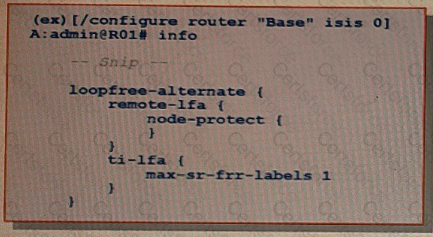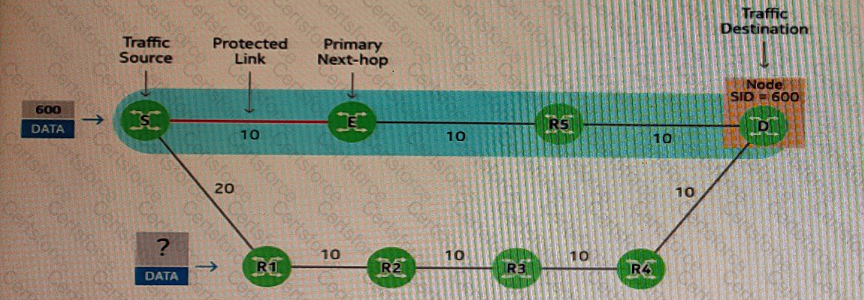Based on the exhibit, which of the following statements about fast re-route for flex-algo instance 129 is TRUE?

Loopfree-alternate has been enabled on a router for its link-state routing protocol. For which types of segments will the router attempt to find a backup path, so that they become protected by fast re-route?
In the context of a network that includes a Path Computation Element (PCE), what is a PCC-initiated LSP?
OSPF type-10 Opaque LSAs can carry different types of advertisements. What type of advertisement carries a router's local 5RGB information?
Which of the following is NOT an advantage of using a PCE for the computation of TE-constrained LSP paths, as compared to using CSPF locally on the PE router?
Which of the following statements about Segment Routing is FALSE?
In which of the following aspects does the configuration of flex-algo LSPs have an advantage over the configuration of SR-TE LSPs?
A router participating in SR-TE is advertising a value of Ox11 for the admin-group membership of one of its interfaces. Which of the following statements is TRUE?
The exhibit shows the fast re-route configuration on router R1, in which both R-LFA and TI-LFA have been enabled. Assume that there are multiple potential backup paths for a given prefix. Which of the following options will router R1 use?

The exhibit highlights in blue the primary path of a segment going from router S to router D. The exhibit also shows a backup path. The protected link fails and fast re-route is triggered on router S. If the backup path has been calculated using standard LFA, how many SIDs are included in the label stack of the data packet forwarded to router R1?
